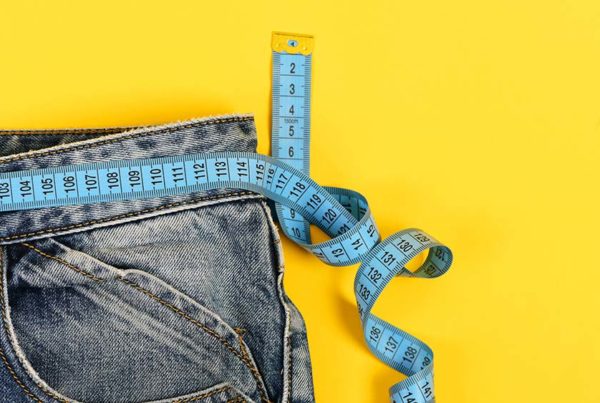We run, bike, swim, sleep, walk and do many other physical, chemical and mental activities. It all requires energy, and the more we have directly affects our human performance. Those with lower amounts of energy are less healthy, store more body fat, are injured more, and don’t move as fast, sleep as well or age as gracefully.
We obtain energy from food, but the makeup of every meal and snack dictates the value of that energy. In particular, how much we have, how long it lasts, and how much goes unused and stored in the body.
We know where our energy comes from—it makes an amazing journey before we can access it, originating as light energy from the sun. Plants absorb sunlight, convert it through the process of photosynthesis, and store it as chemical energy. We eat the plants, and the animals that feed on them, obtaining this chemical energy through the consumption of three key macronutrients—carbohydrates, proteins, and fats. Then, our metabolism converts these foods into ATP (adenosine triphosphate) for mechanical energy that moves the body.
Carbohydrates and fats are the primary sources of our food energy. This comes from sugar, or glucose, from carbohydrates, and fatty acids and ketones from fats.
But it gets complicated. Consider these facts:
– Up to half of the carbohydrates consumed is converted to fat and stored.
– When breaking down fats for high-energy fatty acids, glycerol is released and can be converted to sugar (although this is a very small amount).
– Protein contains amino acids, some of which can be converted to sugar. This can be significant for those eating large amounts of protein.
Requirements of these macronutrients are well understood. Because both protein and fat can convert to sugar, our true need for carbohydrates is actually zero. Not so for protein and fat, which nutritionists refer to as essential nutrients we must consume for health.
When the intake of carbohydrate is lower, more stored fat is used for energy. With an even further reduction of carbohydrates more ketones—derivatives of fat—are produced and used for energy.
The Insulin Error
With less dietary carbohydrate, our reliance on the hormone insulin is reduced, which can be a good thing. Higher amounts of insulin are both unnecessary and unhealthy, leading to lower fat burning and increased fat storage. Insulin also increases the body’s reliance on sugar for energy, maintaining the vicious cycle of hunger, eating more carbs, increasing insulin production, reductions in blood sugar, more hunger, and additional fat storage.
Sadly, the majority of people in the world are now caught up in this vicious cycle. It is not just a matter of being overfat, but the associated chronic illness and lower quality of life. Fitness levels are not immune as insulin can reduce testosterone and other important hormones, and reduce fat burning for endurance activities, leading many to never reach their athletic potential.
A healthy body does not tolerate more than small amounts of insulin (see The Insulin Villain). This means lowering the amount of carbohydrate foods consumed, starting with those that are refined and moderate or high glycemic. (Other than the lesser amounts of carbohydrates in vegetables, fruits, nuts, seeds, beans and legumes—almost all carbohydrates in today’s food supply are refined.)
In addition to carbohydrates, proteins can trigger moderate or even high amounts of insulin because of some amino acids converting to sugar. This is the reason protein intake should be adequate, but not excessive.
Once the body’s reliance on insulin is significantly reduced, it can unleash more untapped energy from stored fat. (There will always be more than sufficient amounts of sugar when it’s needed, such as for the brain, to maintain blood sugar, maintain glycogen stores and for red blood cells.)
Many people want more energy, to train and race faster, achieve much better health, greatly improve brain function, and other benefits. This can be accomplished by going further up the energy spectrum. It involves reducing insulin more by eating even less carbohydrates so the body creates ketones from fats, a super high source of energy, which the brain and almost all the body can use in a healthy way.
For decades, people around the world have been fed the notion, through deceptive marketing, that sugar equals energy. But the fact is, it’s a poor source. Fat provides more than twice the energy than sugar. And by generating more ketones, one can uncover an even larger energy reserve.
Humans don’t need to become fat adapted—we are already there. It’s our normal, healthy physiological state. We just have to make sure it’s switched on.
The mistake made over the past few hundred years (although the process began a thousands of years ago) is that through misguidance and bad advice by governments and the food industry our bodies have been forced to be sugar adapted. This has not worked well, other than it has spawned a huge market for health care and pharmaceuticals to treat sugar-related illnesses. These include most chronic diseases, from Alzheimer’s and cancer to diabetes and heart disease, not to mention the continually growing worldwide overfat epidemic.
In reducing carbohydrates, some do so significantly enough to shift metabolism triggering the production of more ketones. Whether we call this fat- or keto-adapted, Paleo, or any number of other popular names, just don’t call it a “diet.” Instead of blindly following some menu (which usually means chasing the latest so-called diet program promoted as just right for you), it’s ideal if we to learn how best to eat for our bodies.
How can we use ketones, which are produced all the time in small quantities, in larger amounts to greatly improve energy and overall health and fitness? This and other issues are discussed in the next article.
Read Part 2 of the Energy Spectrum: Get Fast on Fat.







